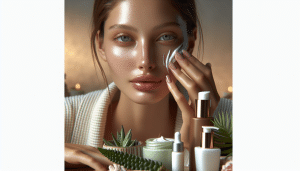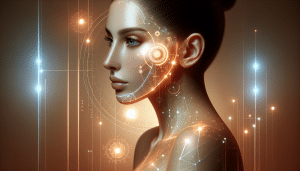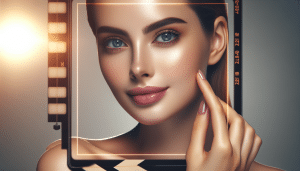Surprising Benefits of Red Light Therapy for Your Skin
Natalie Brooks October 22, 2025
Unlock the world of red light therapy and see how it can support radiant skin and overall wellness. This guide explores the science, applications, and practical tips for integrating red light therapy into a beauty routine, helping many discover brighter, more vibrant skin safely and naturally.
Discovering Red Light Therapy: An Introduction
Red light therapy is quickly gaining popularity in the world of beauty and wellness. By using specific low-wavelength red light, it’s believed to promote healthier, younger-looking skin. Unlike many harsh treatments, red light therapy is gentle and can be done either in a professional setting or with home devices. Many individuals are interested in this non-invasive option that claims to boost radiance with minimal downtime. Research indicates potential improvements for complexion, firmness, and overall skin tone, making it a keyphrase in beauty-focused discussions.
Devices designed for red light therapy typically emit light at wavelengths between 600 and 900 nanometers. This range of light is absorbed by skin cells and may trigger physiological processes such as collagen production and cellular repair. Those seeking alternatives to chemical peels or aggressive lasers are exploring red light as a safer approach. The increase in interest has led to more clinics and spas providing red light rooms, and a wide array of at-home gadgets claiming to reproduce professional results.
What really sets red light therapy apart is its non-thermal nature. It doesn’t burn, sting, or cause irritation when used as recommended, making it appealing to those with sensitive skin. Unlike powerful ultraviolet light, red wavelengths do not increase skin cancer risk. Anyone researching new self-care trends likely stumbles across this fast-growing option, which brings together elements of technology and natural healing methods in one compact package.
How Does Red Light Therapy Work on Skin?
The mechanics of red light therapy revolve around photobiomodulation—a process where light penetrates tissue and stimulates biological activity. The light energy absorbed by mitochondria in skin cells is thought to boost ATP (adenosine triphosphate), the molecule that powers cell repair and regeneration. This energy surge may encourage fibroblasts, leading to increased collagen and elastin, the building blocks of firm, smooth skin.
Collagen is essential for reducing the appearance of fine lines, wrinkles, and sagging. By encouraging the body to enhance its own supply, red light therapy offers an alternative to injectable fillers or surgical lifts. Those practicing regular sessions often share observations of improved skin elasticity and tone. While each person’s results can vary, several clinical trials document measurable benefits related to wrinkle reduction and texture improvement.
Some early research has also examined how red light can help minimize inflammation and promote healing post-procedure. This is why dermatologists sometimes pair red light with microdermabrasion or laser treatments, optimizing the recovery process. Thoughtful integration of red light sessions might support those seeking gradual, natural improvements while preserving the protective barrier function of their skin. Learn more about these mechanisms from the National Institutes of Health.
Key Benefits: From Acne to Aging Concerns
Red light therapy is often marketed for its anti-aging effects, but that’s just the beginning. Regular use may help decrease inflammation, reduce the frequency and severity of breakouts, and support the reduction of redness tied to conditions like rosacea. Research also indicates it can foster faster wound and scar healing, a welcome benefit for those managing blemishes or skin trauma.
Not every benefit is immediately visible. Some users report a subtle boost in skin hydration over time, possibly due to red light’s ability to improve microcirculation. When blood flow improves, skin cells can present a healthier, plumper appearance. Uneven texture and pigmentation challenges may diminish gradually, especially when therapy is paired with a gentle skincare routine that includes moisturizing and sun protection.
Evidence also points to the possibility of enhanced skin resilience. By supporting the body’s defense against oxidative stress, red light therapy might play a role in how skin adapts to daily environmental challenges. This cumulative resilience is relevant for those exposed to pollution, sunlight, and fluctuating weather. Individuals pursuing a holistic approach to beauty and well-being appreciate the adaptability of this modality.
Using Red Light Therapy: Tips for Safe and Effective Results
Safe application is crucial for success with red light devices. Always read manufacturer instructions before using an at-home unit, and consult with a licensed professional for in-office treatments. Protective goggles are often suggested, particularly for higher-intensity devices. Never use red light on open wounds unless under medical supervision. Adhering to recommended session durations—generally 10 to 20 minutes, two to three times per week—may optimize benefits while minimizing risks.
Preparation matters. Cleanse the skin before each session, and avoid using products containing retinol or exfoliating acids immediately beforehand, as these can increase irritation risk. Some practitioners recommend a mild, fragrance-free moisturizer after therapy to lock in hydration. Space sessions out to monitor how the skin responds—if redness or discomfort occurs, decrease session length or frequency.
Those integrating therapy alongside dermatology appointments should mention their device use, as red light might interact with certain prescription medications or topical treatments. Awareness about the cumulative effects over time is important; while many report visible improvements after four to six weeks, patience is required. Learning about individual skin responses from credible wellness boards like AAD can guide long-term habits.
Home Devices vs Professional Treatments
The popularity of red light has led to a range of at-home devices, from hand-held wands to larger face masks. Professional treatments use more powerful equipment under licensed supervision, which may yield faster results for deep wrinkles or stubborn pigmentation. However, at-home models are praised for their accessibility and convenience, especially for those interested in consistent, low-intensity sessions. Understanding the differences in output, cost, and safety protocols can help guide appropriate choices for novices and experienced users alike.
At-home devices tend to be less expensive in the long run, yet often require longer usage to observe results when compared to clinical alternatives. Scheduling flexibility appeals to busy lifestyles, making it easier to maintain recommended frequency. However, quality varies widely, so checking for FDA clearance and positive peer reviews is essential. Professional sessions may also combine red light with other evidence-based treatments, offering a more comprehensive approach—but usually at a higher price point.
Individuals with chronic skin concerns or preexisting conditions should consult a dermatologist before trying any new device. Not all skin types respond in the same way, and specialized guidance ensures safety and efficacy. Explore community forums, manufacturer documentation, and educational resources such as Cleveland Clinic to see how others have integrated these therapies into their routines. The right option depends on individual skin needs, budget, and accessibility.
Exploring the Future: Research and Long-term Perspectives
Ongoing research continues to reveal new potentials for red light therapy in skin care, from targeting advanced photodamage to supporting scalp and hair health. As clinical studies become more sophisticated, emerging data suggest expanded uses in wound healing, eczema, and even joint discomfort. These findings signal that red light’s role in wellness could keep growing, as technology advances and user expectations evolve.
Researchers are also working to define optimal wavelengths, dosages, and session protocols, which will likely make treatments even safer and more effective in the future. Collaboration between medical professionals and device manufacturers promises to push the technology forward. As public interest rises, expect to encounter red light more often in both medical and spa settings, where providers blend it into broader wellness strategies.
The ultimate appeal of red light therapy lies in its low risk profile and user-driven application. Long-term benefits will depend on responsible use, good skincare habits, and ongoing consultation with credible sources. Anyone considering therapy should stay updated through expert-led sources like Harvard Health, as recommendations evolve with new discoveries. This journey surfaces unexpected insights for anyone invested in beauty and self-care.
References
1. Avci, P., Gupta, A., Sadasivam, M., Vecchio, D., Pam, Z., Pam, N., & Hamblin, M. R. (2013). Low-level laser (light) therapy (LLLT) in skin: stimulating, healing, restoring. Retrieved from https://www.ncbi.nlm.nih.gov/pmc/articles/PMC4126803/
2. American Academy of Dermatology Association. (n.d.). Red light therapy: Uses, efficacy, and safety. Retrieved from https://www.aad.org/public/everyday-care/skin-care-secrets/routine/red-light-therapy
3. Cleveland Clinic. (n.d.). Red Light Therapy: How It Works and Its Uses. Retrieved from https://my.clevelandclinic.org/health/treatments/24561-red-light-therapy
4. Harvard Health Publishing. (n.d.). What is red light therapy? Retrieved from https://www.health.harvard.edu/blog/red-light-therapy-benefits-fda-approved-skin-care-2019112218291
5. US Food and Drug Administration. (n.d.). Medical Devices: General Wellness: Policy for Low Risk Devices. Retrieved from https://www.fda.gov/regulatory-information/search-fda-guidance-documents/general-wellness-policy-low-risk-devices
6. American Academy of Ophthalmology. (2023). Safety of Light-Based Home Devices for Skin. Retrieved from https://www.aao.org/eye-health/tips-prevention/safety-home-devices-skin








